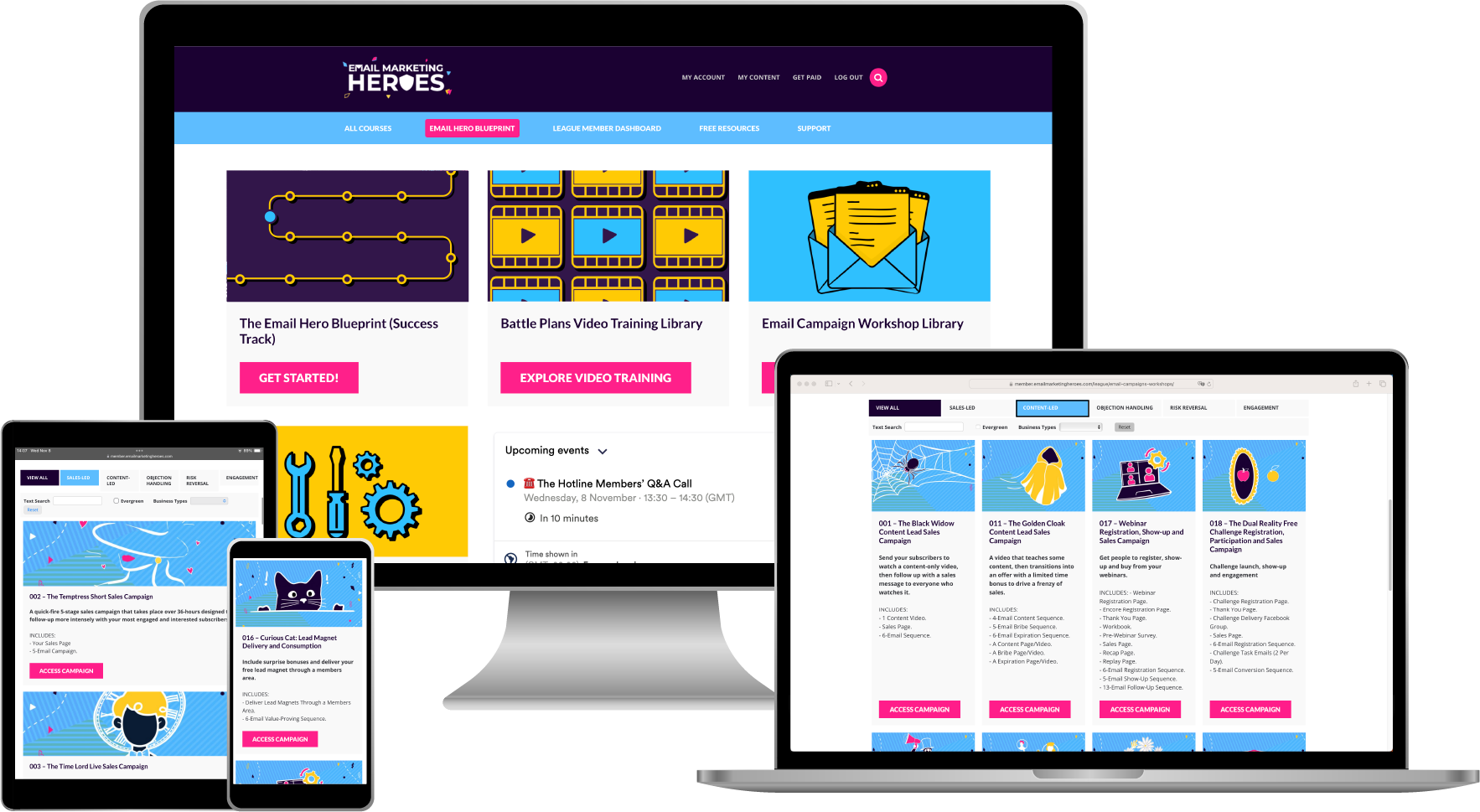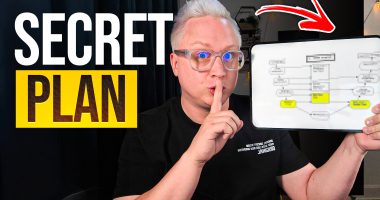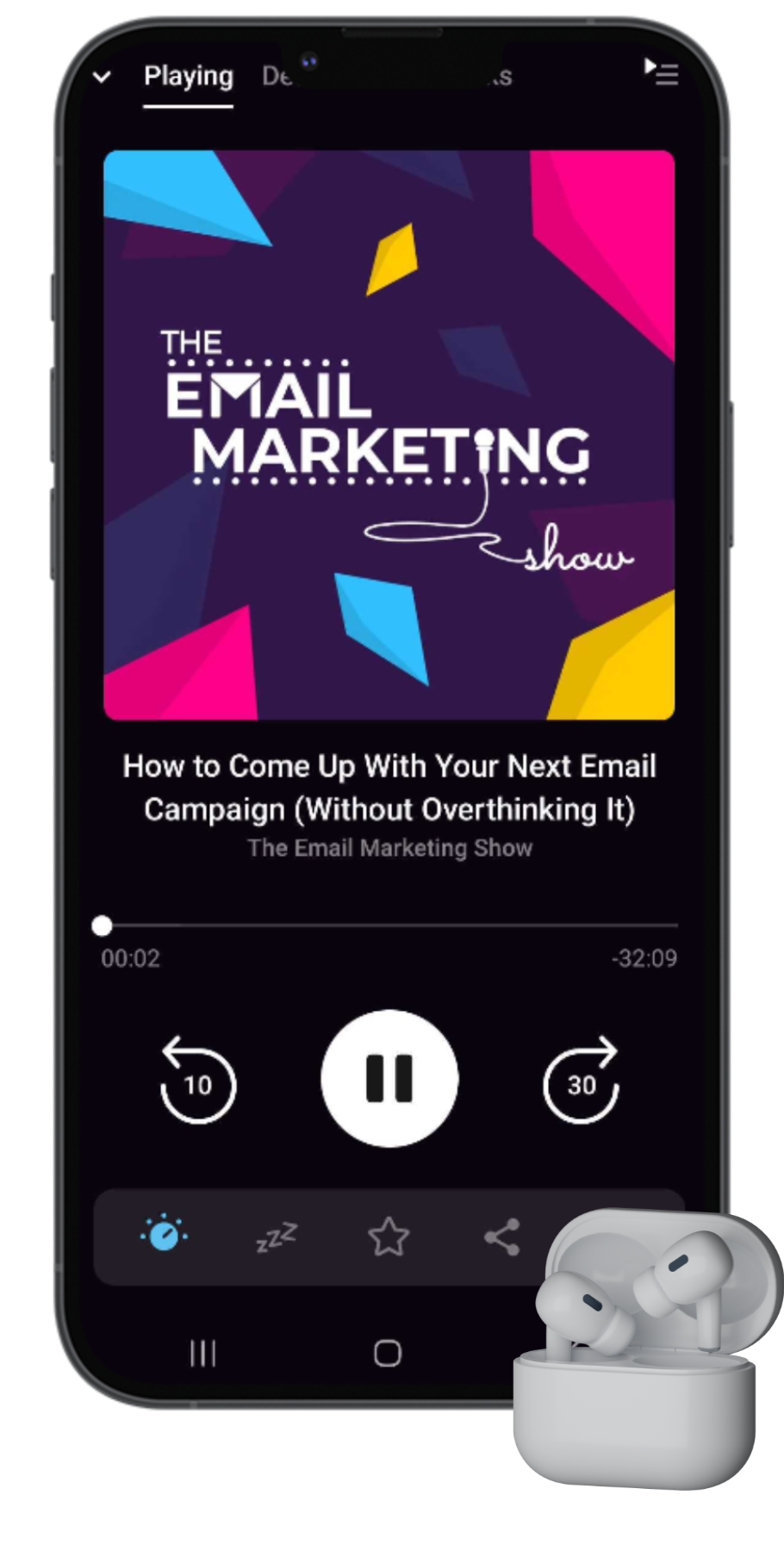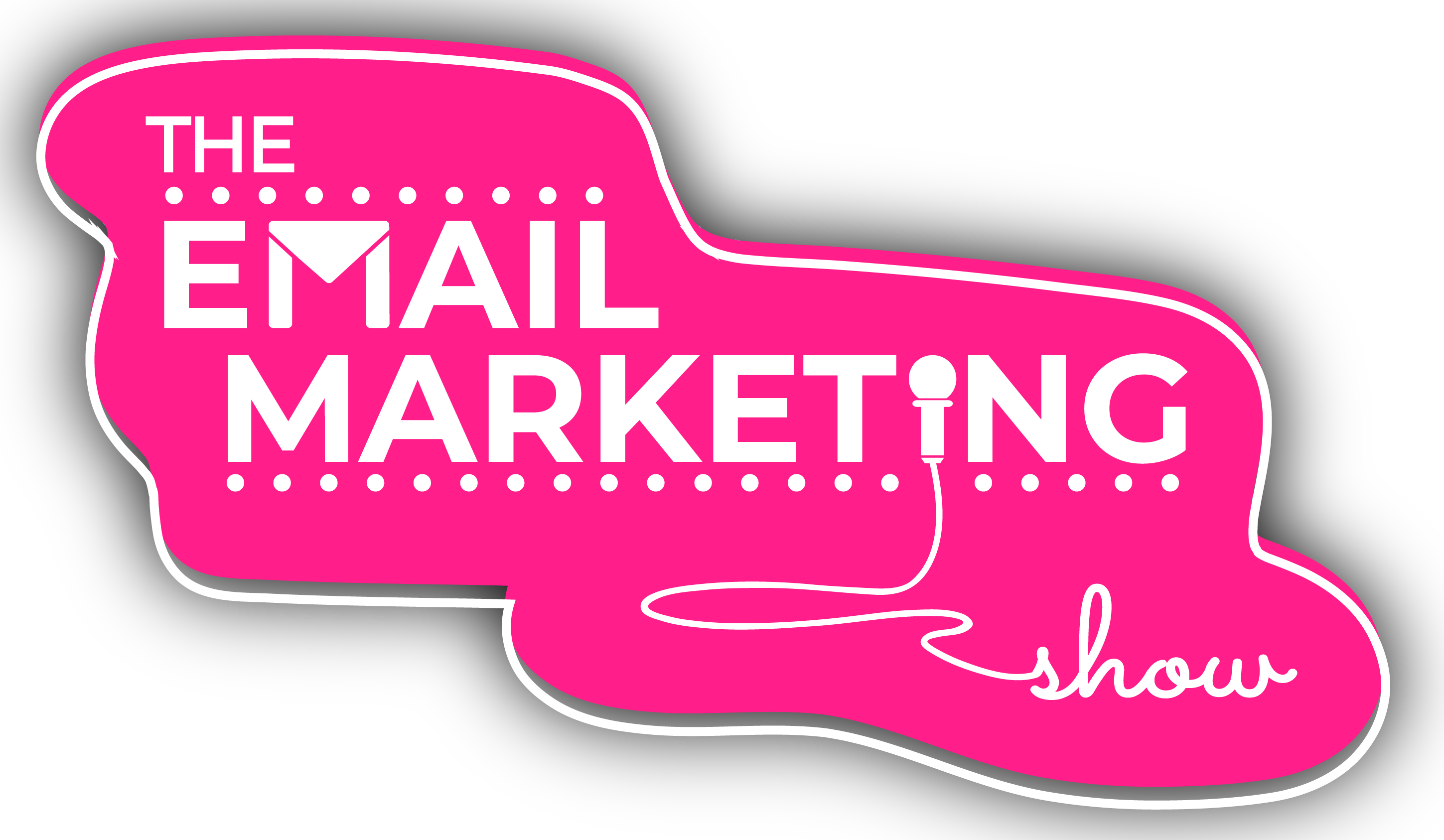
Cool Techniques To Maximise The Power Of An Email Marketing Waitlist Before Your Next Launch
Can you use an email marketing waitlist for your next big launch? Maybe you have a membership or a course and want to generate excitement, curiosity, and demand. Can a waitlist help you do that? Also, how do you keep people on your waitlist warm? How long should you run a waitlist for, and how often should you contact people on it?
We answer all these questions and much more…
Are you ready to get all the good stuff?
Let's go!
SOME EPISODE HIGHLIGHTS: (0:08) Grab our amazing resource Click Tricks totally for FREE! (4:18) Should you have a waitlist for your membership or course? (11:17) When should you use a waitlist? (14:08) How do you get people on your waitlist? (15:22) Where possible, reward people instantly! (17:50) How we use waitlists in our business? (21:18) Give people a genuine reason to join your waitlist. (22:52) How do you keep people on your waitlist warm? (30:07) What's the dual reality principle? (32:47) Subject lines of the week.
Should you have a waitlist for your membership or course?
Between the two of us, we’ve had experience selling courses and memberships for years, both with our current and previous businesses. And one of the strategies that go with opening the doors to your new product is having a waitlist. Do you absolutely need to have one? Unless your membership or course is capped in terms of the number of people who can join, we don’t think a waitlist is strictly necessary.
A waitlist helps you create demand in advance, which is why we use this strategy as a key component of a couple of the email marketing campaigns we teach. It can be a useful tool to gauge an interest. Is your audience interested in your upcoming product? By joining a waitlist, people make a micro commitment – they're deciding they want to find out more about something you're about to offer.
Plus, if you’re new to the world of online memberships and courses and aren’t sure whether something will sell, a waitlist is a low-barrier entryway to help you figure that out. Once you develop more experience, you’ll develop a level of confidence and awareness of what’s likely to work. But if you’re just starting, you can build this awareness with a waitlist.
Where will you talk about your waitlist?
Should you talk about your launch only to the people on your waitlist? Absolutely not! If you're only marketing to your waitlist and not the rest of your audience, you’re leaving money on the table. Because there will be people on your email list who would never sign up for a waitlist. And yet, they might be interested when they see your sales page.
You also need to think about what advantage you'll give to the people on your waitlist. Why are they on the waitlist in the first place? Will you give them early access? Does the waitlist serve a real purpose or are you just “dressing something up in marketing”?
A great place to promote your waitlist (and your upcoming launch) is on your social media. If you have a podcast or an active social channel, you can start talking about your membership or course a couple of weeks before you open the doors. Start inviting people to jump on your waitlist – it's a great call to action and a good way of attracting those with a level of intent into your world.
When should you use a waitlist?
We have a waitlist for our Email Engine Accelerator, which is a capped programme. We can only take a small number of people each time we run it (three times a year), and demand is high because people get results. So when we talk about it, our customers want to know when the next intake is. We have a good reason to ask people externally (on our podcast, for example) to join our waitlist to be informed about the next opening.
Before you decide to start a waitlist though, you should think about what you'll do after the launch. Because you can't suddenly take people from your waitlist and start sending them daily emails as part of your email marketing. If you want to do that, you have to frame that transition first. You can even sell them something else if the product they joined the waitlist for isn't available anymore or they didn't buy. But you have to tell them that's what you're going to do – you have to salvage that relationship first. A way to do that is via a welcome sequence. Ours is called the Get to Know You sequence, and it's a 4-part campaign that can act as a bridge for people who transition from a waitlist we created onto our daily emails.
What is a waitlist good for?
A waitlist can give you an idea of demand and a sense of confidence. When you ask people to join a waitlist to be informed about a product you're about to launch (and they do), it tells you they're interested and that you have a viable product.
Plus, a waitlist gives something importance – it elevates it. It tells others that what you have is important and exclusive. It means you have a bunch of people who've raised their hands and expressed an interest. And the next time you launch something, you can also go back to those same people again.
How do you get people on your waitlist?
Give people a good reason to join your waitlist
If you want people to join your waitlist, you have to give them a good reason to do so, such as an emotional reason (or a bunch of them). For example, in our Anticipation Action sequence or our Book Launch campaign, we ask people to join a waitlist. If it's a book you're launching, you can offer people some chapters of the book ahead of publication, for example.
If you’re selling a membership, you may offer little samples of the programme or ask people to express their preferences and get involved in specific parts of the creation process, which generates buy-in. Or you could offer a free gift to the first few people who join your waitlist. It could even be a video tour of your membership!
Where possible, reward people instantly!
Although it’s not always possible, try to give people something as soon as they join your waitlist. If you’re launching something live (and your product isn’t going to be available for a while), you could, for example, run a group call for the people on your waitlist and give them a preview or an outline of what’s to come. We do this in the shape of a webinar with an informal ‘behind the scenes’. Or you can give them instant access to the list of live calls.
Whatever you give them doesn’t have to be ‘big’ – it’s just something in return for joining your waitlist so they don’t feel they got nothing for that effort. It provides people with certainty, and it doesn't leave them feeling like they’ve been left alone after they gave you their email address. When you give people something in return, you trigger a sense of satisfaction.
For example, if you’re starting a live programme in a month, but you're giving people on the waitlist the calendar of calls now, they can start figuring out how your membership or course fits into their lives. They sell themselves in advance. Plus, if you’re giving them the information now, you’re answering questions they might have down the line, so you save yourself some time, too.
How we use waitlists in our business
There are two different ways we use to get people on waiting lists. In a couple of cases, the waitlist is already baked into our email campaigns.
Otherwise, on a subtle level, every once in a while, we’ll send out a pre-framing email that goes out before a sales campaign or just casually. This could be, for example, before our Black Friday campaign. We might send an email ahead of time and ask people to let us know if they want to be told about our Black Friday offer one hour before everyone else, for example. We don’t call it a waitlist, but the application is similar.
So we have two different circumstances – in one case, we’re asking people to click a link and send them to a dedicated page where they have to enter their name and email address to join a waitlist. Generally speaking, that’s not a great idea because people sometimes click on links by accident or may be using a piece of technology that clicks on links for them.
What you want instead is the extra commitment that someone needs to take with you when they type their name and email address and actively decide to join your waitlist. You could even add a PS at the end of one of your emails and ask people to click on a link so you can let them know an hour before your offer opens. It adds a bit of spice to the campaign.
Another thing you can do is to give people a bonus (something valuable to them) for joining your waitlist. This way, you build a waitlist full of people who already appreciate the value of your product. You’re pushing the psychology of someone’s commitment a little further because they're joining your list to get a bonus.
Give people a genuine reason to join your waitlist!
When creating a waitlist, one of the most important things to do is to wrap it around a genuine reason. Why do you have a waitlist in the first place? Sure, it can create desire and anticipation. But ultimately, you’ll probably tell your whole email list about your product anyway. So it’s important to have a specific reason for the waitlist. An example could be that it's a limited-time offer or that you'll be capping the number of people who can join your programme.
If you don’t have a real reason (perhaps because your programme is evergreen), you can still do an open-and-close launch where you only let a handful of people in. That would give you a legitimate reason for a waitlist because you have limited spaces available.

The Top 10 Books To 'Power Up' Your Email Marketing
10 book recommendations that will improve all areas of your email marketing (including some underground treasures that we stumbled upon which have been game-changing for us).
How do you keep people on your waitlist warm?
How often should you get in touch with people on your waitlist? The more time passes between someone joining your waitlist and the moment you open the cart, the colder people will be. Over time, they lose the excitement and drive that prompted them to sign up for the waitlist in the first place. Their desire for your product has waned and petered out.
That’s why, when we promote a sales webinar, we only do it 3-4 days in advance. So keep the time on the waitlist as short as you possibly can. Also, rather than spending time telling people that a waitlist is coming, let them know it's available now and build some anticipation.
A great way to do this is to promote your waitlist on your socials closer to the time of the launch by using dynamic content. This is something we do with our sponsorship segments for our podcast. The sponsorship piece of content is dynamically added through our podcast hosting platform, so anyone listening to any episode during the days leading up to a particular offer going live will hear it.
Don't try to keep people's interest – raise it!
What's also important is how you communicate with your waitlist. You can't keep telling people that your product is coming soon. Instead of focusing on keeping people's interest, try to raise it! You want people to get engaged and involved.
You can do that by asking them to vote on something, for example. That increases their emotional buy-in into what you're doing, so by the time you open the cart, they're interested and involved. Don't just simmer people – raise the heat!
Does a waitlist work with a cold audience?
We (Rob in particular) don't particularly believe you can launch your product by simply building a waitlist of cold leads. If you have a small audience or following, and you plan to spend money on ads to create a waitlist and then smash your launch, you might not get the amazing results you're expecting. Over time, we sold a lot of products online in different businesses and niches, and the waitlist strategy can work, but only if you do it by keeping the above principles in mind.
Of course, if you're an influencer in your niche and have a huge audience with thousands of followers who are ready and waiting to be told when your next product launches, then it's great. But a tiny social following or a completely cold ads-driven audience aren’t going to respond as well.
If this is you, consider selling organically to your audience and creating an evergreen offer instead of following the ‘big launch' model. You can switch to that when you get to the point where you have a critical mass of people that you can move at speed (i.e. you drop an email in the morning, and you have lots of takers by the afternoon).
Otherwise, using a big launch + waitlist strategy with a cold audience is expensive, slow, and potentially risky. You may burn through a big budget before you can see results. Because it'll take much longer to get the number of people you need on your waiting list to make your launch work. If you go down this route, you’ll need to have the waitlist open for longer and put a lot of effort in to keep people warm and raise their interest.
What's the dual reality principle?
When we are in the situation of having a waitlist open and sending emails out to raise people's interest, we use what we call our dual reality principle. This is where we send the same emails to our waitlist and our generic email list but with a different call to action. We do that to build hype, excitement, and anticipation for everyone – not just the people on the waitlist.
And to do this, we use conditional content so some people see one paragraph of text in their emails and others see a different one with another call to action. If people aren’t on your waitlist, you can ask them to join it. And if they are on it already, you can give them a different call to action to take.
If you're using either our Anticipation Action sequence or our Book Launch campaign, the waitlist is baked into them already. If you have real scarcity (with limited spots available), a waiting list works beautifully. But generally speaking, the success of a waitlist strategy will also depend on how long you have it open, how you’re keeping people engaged, and how you’re transitioning them from your waitlist onto your daily email marketing, especially if they come from social media or ads.
If you want immediate access to all the campaigns and strategies we talked about, head over to The Email Hero Blueprint.
Subject line of the week
This week’s subject line is “Very demanding money”. It works because it generates a lot of compound curiosity. Who’s demanding money? What are they demanding money for? Who are they demanding money from? Is it good? Is it bad?
The email was about how Netflix is now enforcing its multi-household policy on Rob’s account. But you’d have to open up the email to know that. So check it out!
Useful Episode Resources
Related episodes
The Most Perfect Way To Launch & Promote Your Business Book With Email Marketing.
Small List Big Launch – With Gemma Bonham-Carter.
FREE list to improve your email marketing
If you want to write better emails, come up with better content, and move your readers to click and buy, here's how. We put together this list of our Top 10 most highly recommended books that will improve all areas of your email marketing (including some underground treasures that we happened upon, which have been game-changing for us). Grab your FREE list here.
Join our FREE Facebook group
If you want to chat about how you can maximise the value of your email list and make more money from every subscriber, we can help! We know your business is different, so come and hang out in our FREE Facebook group, the Email Marketing Show Community for Course Creators and Coaches. We share a lot of training and resources, and you can talk about what you're up to.
Try ResponseSuite for $1
This week's episode is sponsored by ResponseSuite.com, the survey quiz and application form tool that we created specifically for small businesses like you to integrate with your marketing systems to segment your subscribers and make more sales. Try it out for 14 days for just $1.
Join The Email Hero Blueprint
Not sick of us yet? If you're a course creator, membership site owner, coach, author, or expert and want to learn all about our ethical psychology-based email marketing that turns 60-80% more of your newsletter subscribers into customers (within 60 days), The Email Hero Blueprint is for you.
This is hands down the most predictable, plug-and-play way to double your earnings per email subscriber. It allows you to generate a consistent flow of sales without having to launch another product, service, or offer. Best news yet? You won't have to rely on copywriting, slimy persuasion, NLP, or ‘better' subject lines. And you can apply everything we talk about in this show.
Subscribe and review The Email Marketing Show podcast
Thanks so much for tuning into the podcast! If you enjoyed this episode (all about how to maximise your email marketing waitlist and have a successful launch) and love the show, we'd really appreciate you subscribing and leaving us a review of the show on your favourite podcast player.
Not only does it let us know you're out there listening, but your feedback helps us to keep creating the most useful episodes so more awesome people like you can discover the podcast.
And please do tell us! If you don't spend time on email marketing, what do you really fill your working days with? We'd love to know!






